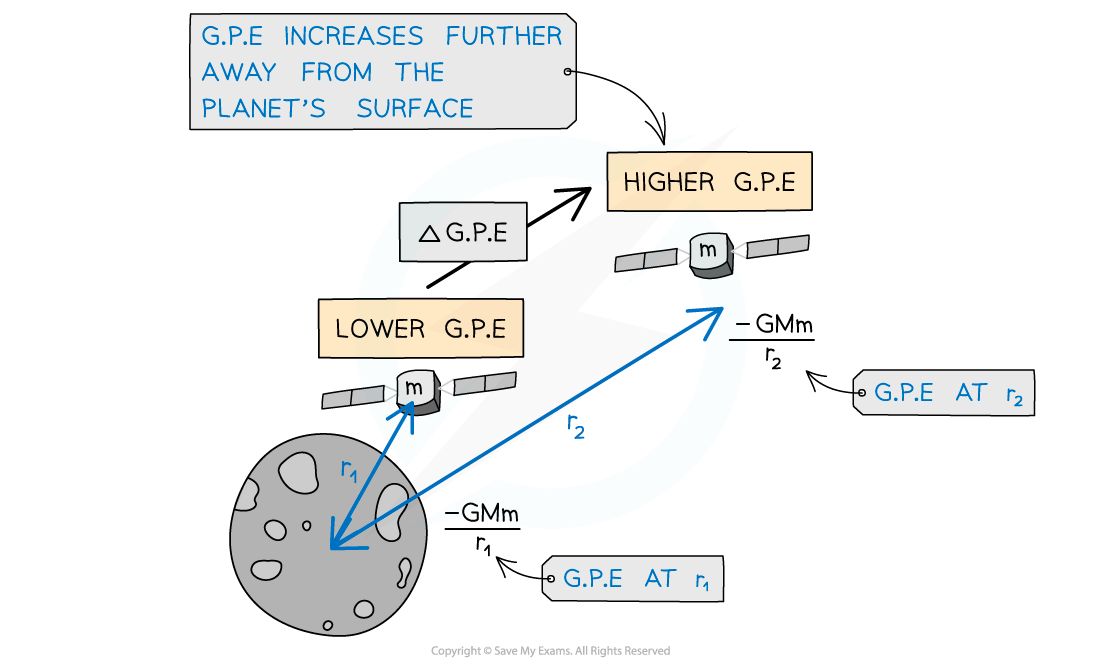Gravitational Potential
- The gravitational potential energy is the energy an object has when lifted off the ground given by the familiar equation:
- The gravitational potential energy on the surface of the Earth is taken to be 0
- This means work is done to lift the object
- However, outside the Earth’s surface, G.P.E can be defined as:
The energy an object possess due to its position in a gravitational field
- The gravitational potential at a point is the gravitational potential energy per unit mass at that point
- Therefore, the gravitational potential is defined as:
The work done per unit mass in bringing a test mass from infinity to a defined point




